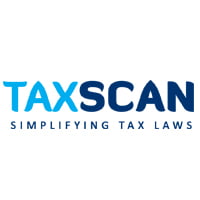ITAT Restores 80G Approval Matter to CIT(E), Citing Procedural Lapses in Rejection Order [Read Order]
The tribunal asserted that in the procedural checks embedded in exemption approval processes, the authorities cannot arbitrarily widen the scope of inquiry without giving due opportunity to the assessee
![ITAT Restores 80G Approval Matter to CIT(E), Citing Procedural Lapses in Rejection Order [Read Order] ITAT Restores 80G Approval Matter to CIT(E), Citing Procedural Lapses in Rejection Order [Read Order]](https://www.taxscan.in/wp-content/uploads/2025/06/itat-itat-roundup-weeklyrounup-taxscan-2.jpg)
The Surat Bench of the Income Tax Appellate Tribunal (ITAT) set aside the rejection of Section 80G(5) approval by the Commissioner of Income Tax (Exemptions), Ahmedabad, in the case of assessee, Shri Navsari Modh Vanik Panch.
Shri Navsari Modh Vanik Panch is a trust established in 1953 and registered with the Charity Commissioner. It has sought approval under Section 80G(5) of the Income Tax Act, 1961. The trust claims to be engaged in a range of charitable activities, including poverty alleviation, medical and educational aid, and social upliftment, without any discrimination based on caste, creed, or religion.
GST on Real Estate & Works Contracts – Your Ultimate Guide to GST in the Real Estate Sector! Click here
Although the trust already held a valid registration under Section 12A/12AB and had been granted provisional registration valid up to AY 2025–26, its fresh application for approval under Section 80G was rejected by the CIT(E), who concluded that the trust was not “purely charitable” and had religious objects, rendering it ineligible for 80G approval.
The Authorised Representative(AR) of the assessee submitted that the CIT(E) had erred in rejecting the application without adhering to the framework laid down under Rule 11AA(2)(g) of the Income Tax Rules. Specifically, the rule mandates that only the accounts of the three preceding financial years be considered when determining the extent of religious expenditure. The CIT(E), however, referred to earlier years beyond the prescribed period and made no explicit finding of any violation within the permissible timeframe.
It was also submitted that the trust had not incurred any expenditure on religious activities in the three relevant years and was willing to provide audited accounts to that effect. The trust emphasised that its objects, when read as a whole, reflected a charitable intent rather than an overtly religious purpose. The object clause cited by the CIT(E) only mentioned incidental support to temple administration among a wide range of secular, welfare-driven objectives. On the other hand, the Revenue supported the findings of the CIT(E) and urged that the rejection be upheld.
The Tribunal noted that the trust was already registered under Section 12A/12AB, which is a precondition for obtaining approval under Section 80G. It held that the CIT(E)’s inquiry should have been limited to examining whether the trust had violated the prescribed conditions, particularly whether more than 5% of its income had been spent on religious activities in the last three years. The bench observed that no specific finding was recorded by the CIT(E) regarding any such violation, nor was any show-cause notice issued to the assessee before the scope of inquiry was expanded beyond the mandated three-year period.
Given this, the ITAT found merit in the assessee's submissions and ruled that the matter be remanded back to the CIT(E). The CIT(E) has been directed to examine the accounts of the three preceding years. If the trust is found to be compliant with the Rule 11AA(2)(g) conditions, particularly the threshold of religious expenditure and the then approval under Section 80G(5), the approval should be granted. The appeal of the assessee was thus allowed for statistical purposes. The case now stands restored to the CIT(E) for fresh adjudication by the law.
To Read the full text of the Order CLICK HERE
Support our journalism by subscribing to Taxscan premium. Follow us on Telegram for quick updates
Shri Navsari Modh Vanik Panch vs The CIT(Exemption) , 2025 TAXSCAN (ITAT) 1004 , ITA No.1265/SRT/2024 , 17 February 2025 , Darshit J. Naik , Ravi Kant Gupta

